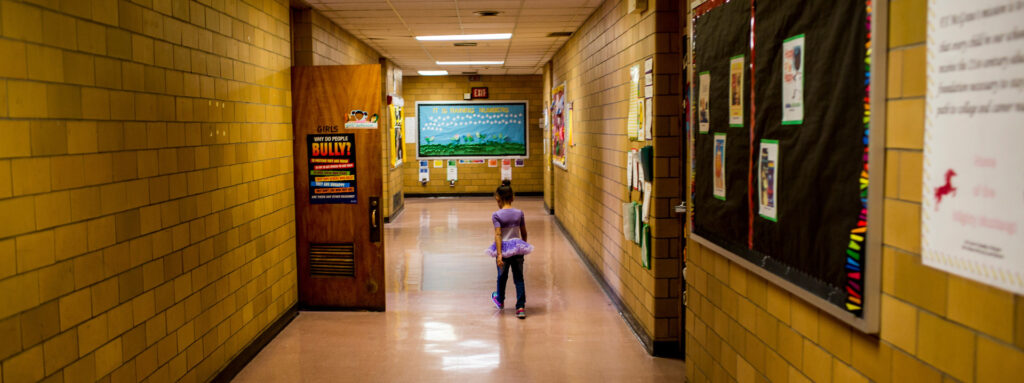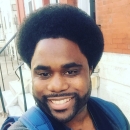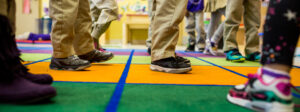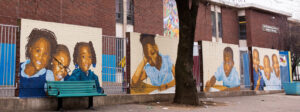In many ways, my fourth-grade students TJ and Jada were opposites. TJ was a feminine boy who loved Beyoncé and loved to dance. Jada was an athletic girl who enjoyed basketball. But they had one unfortunate trait in common: both had been bullied time and time again because of who they are—just like I was when I was a kid.
Sometimes, they bullied each other.
It was the end of the school day, and my classroom was buzzing with chatter as the students gathered their supplies and put on their winter coats. Amidst the chaos, Jada unknowingly brushed her backpack against TJ.
“Leave me alone, Jada. That’s why you’re gay!” TJ hollered as he balled his fist.
“That’s why gay people have diseases!” cried Jada.
I stood silent, trying to come up with the best way to intervene without lashing out in anger. It’s moments like these that remind me why I got into teaching in the first place—to build strong relationships with all my students. When it came to TJ and Jada, I knew my experience being bullied because I was gay gave me the ability to connect with them in a unique way. This was a great opportunity for me to teach them to interact with their peers more compassionately.
I separated the pair and walked Jada into the hallway to talk to her one on one.
“Jada, what happened?” I asked.
“Mr. Shelton, TJ started it,” Jada mumbled. “I didn’t do anything wrong.”
“Jada, what you said was very mean and hurtful. I have many friends that are gay that have no diseases. I expect better from you.”
“Sorry, Mr. Shelton.” Her big brown eyes stared down at the floor. “I didn’t mean it.”
“Thank you, Jada. I’ll talk to TJ and get his side of the story.”
[subscribe]
Jada’s not the first student I’ve heard use the word “gay” in a negative way. Several kids have told me that they learn homophobic slurs from their parents and other family members. I work to understand the unique struggles my students face and do my best to incorporate these struggles into my curriculum. I make a consistent effort to incorporate LGBT history, as well as the histories of other marginalized people, into my lessons. This makes addressing conflicts like TJ and Jada’s much easier, but I still have to continually remind myself that my students are only ten years old and are displaying a learned behavior that they don’t fully understand. To get to the heart of my students’ homophobia, I directly challenge their preconceived notions about sexuality and gender roles. I have learned that if I want to change their mindsets, I must show them that they have no reason to fear people who are different from them.
I walked Jada back into the classroom and asked TJ to come into the hallway.
“TJ, what happened?” I asked.
“Mr. Shelton!” TJ stomped his foot and rolled his eyes. “Jada and the other girls have been messing with me all day. I don’t got time for it.”
He had been in conflict with several of the fourth-grade girls since they started third grade together over a year ago. Over time, I realized the root of the problem was that the girls wanted to be TJ’s friend, but were afraid to because of their internalized homophobia.
“Did you call Jada gay?” TJ didn’t say anything. “I’m going to give you one minute to tell me the truth.”
“Ok Mr. Shelton, yes I did.” He stared up at the ceiling. “But I didn’t mean it.”
“You may not have meant it, but you have to choose your words better.”
“I know,” TJ sighed. “And don’t forget tomorrow is our one-on-one!” TJ strutted back to class.
[related]
Conversations like this aren’t easy for teachers or students, but we can’t be afraid to address homophobia or any other sort of bullying in our classrooms. If we fail to address it, we are effectively giving students permission to oppress others, and we’re complicit in creating an unsafe learning environment. But we must do more than simply shut down homophobic behavior. It’s just as important that we teach kids the ability to tell right from wrong and show them the value of standing up for their classmates. If we keep our messages consistent and let our students know that we trust them to do what’s right, they’ll catch on and help us in our efforts to build a supportive classroom community.
That’s easier said than done, of course. In my classroom, I always start by eliminating hateful language—and, crucially, explaining why these words are hurtful, so students can think for themselves about the impact of using them. I try to ask questions, and avoid making assumptions in the process.
The day after my conversations with TJ and Jada, TJ ran up to me.
“Guess what, Mr. Shelton?” he asked. “Some kid called Jada fat today!”
I held my breath, bracing myself for yet another conversation about his conflicts with the group of girls.
“And you know what I did? I told him he better choose some different words! He shut up so quick, Mr. Shelton! Me and Jada were laughing so hard!”
TJ was a great reminder that students are never too young to learn to stand up for their classmates. In elementary school, they’re still learning to make good decisions, and it’s up to us as educators to model how to intervene and explain to students why certain behavior is hurtful. This does the bulk of the work when it comes to encouraging kids to stand up for what’s right. Once they understand why something is damaging or why a stereotype is untrue—and if we’ve done a good job showing them we trust them to make good choices—they’re able to help us build a positive classroom community.





